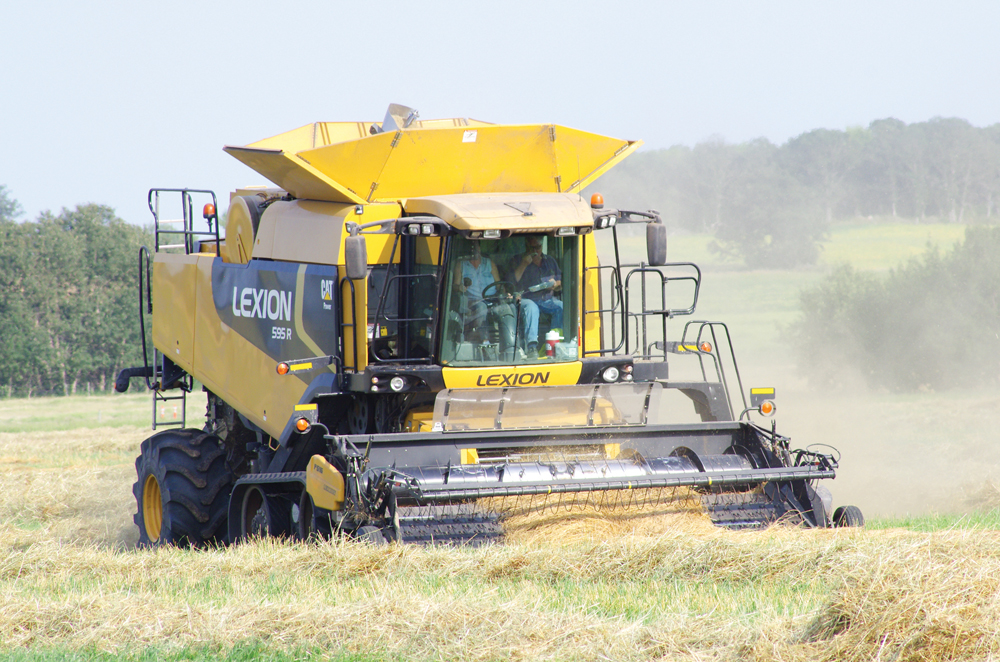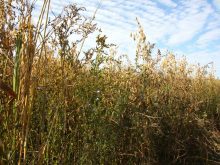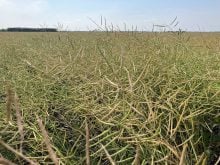The volatile year for agriculture markets is unlikely to abate, says Mike Jubinville, senior market analyst with MarketsFarm Pro.
“I look at these markets as bipolar in some cases,” says Jubinville. “On one hand, the macroeconomics have potentially bearish demand implications as fears of a recessionary environment take hold. But on the other hand, we have crop commodity supplies that remain historically tight. It’s a rather unusual situation to find ourselves in.”
The same big-ticket items affecting the markets are in play, including the supply-chain hangover from COVID, the war in Ukraine, rising inflation and weather.
Read Also

Manitoba Ag Days plans star-studded speaker lineup
Dragons’ Den panellist Arlene Dickinson among speaker series highlight for 2026 Manitoba Ag Days in Brandon, alongside slate of agriculture experts.
Here at home, the Bank of Canada raised interest rates again, echoing the actions of other central banks around the world.
“The worry now is that if we apply the brakes too hard and slow down the economy too much, we will tip ourselves into recession,” says Jubinville. “That economic slowdown means demand has the potential to slow down in the real economy. And that’s the concern we have in the commodity sector right now.”
When central banks raise interest rates, it creates a situation where short-term loans have higher interest rates than long-term loans. Jubinville says this scenario almost always leads to a recession. It preceded the 1980 recession, the 1990 recession, the 2008 recession and the brief recession at the beginning of COVID.
“We haven’t dipped ourselves into an official recession yet. However, we seem to be on the cusp, and I think over the next one, two or three quarters, we’ll probably see that take place.”
The U.S. dollar is another big-ticket item that affects markets, and it’s been on the rise.
“Typically, this rapid rise in the U.S. dollar tends to be bearish for not just agriculture commodities, but commodities in general,” says Jubinville.
In Canada, this seems counter-intuitive because a rising U.S. dollar means Canadian products are cheaper for American importers. But a rapid move in the dollar is often an indicator that investors are looking for a safe haven for their money because bigger troubles are brewing.
“This relationship feels a little different this time around,” says Jubinville. “Through the first six months of the year, we saw a rapidly rising U.S. dollar but we also saw property markets also holding very strong,”
He posits that there’s a delayed effect.
“At least for now, it seems to be more of a slowing process than a halting process,” he says. “However, I think a high U.S. dollar is going to weigh on U.S. agriculture markets and influence other agriculture markets eventually.”
The last big macro-economic factor is the war in Ukraine.
“This conflict seems to be getting more intense now,” says Jubinville. “I think it adds a level of anxiety to everyone in the world that wants to get their food coverage in place and fears that, in an inflationary environment, food costs are going up.”
Winter crop seedings are down 30 to 40 per cent this year in Ukraine. There are also questions surrounding the Nov. 19 deadline for renewal of the agreement that allows shipping through the Black Sea. The Russians will almost certainly try to keep that as a trump card in any peace negotiations.
“It’s going to be interesting to see how this all plays out,” says Jubinville.
Canola: Holding up
Despite all factors, markets are holding up.
“I actually find it quite impressive,” says Jubinville. “Typically, commodity markets don’t respond well during a recession. Yet we’re looking at a canola market with cash prices upwards of $20 a bushel or so.”
While canola prices are still very high from a historical context (largely because of tight supply), Jubinville says even at that price, the market is functioning to encourage demand during the fall shipping season.
This year’s harvest is refilling the pipeline after being depleted by last year’s drought, and the domestic crushing sector is ramping up.
“I’m using a number right now of about nine and a half million tonnes for this year’s crush,” he says. That number would likely be higher if not for the drought.
“I think the momentum is certainly going to start building now with the extraordinarily profitable crush margins available for domestic processes this year,” says Jubinville. “Prices in excess of $200 a tonne certainly are incentivizing the domestic processors to go full out. There’s good money to be made in the crushing sector right now.”
Jubinville also expects canola exports to China to recover.
Barley: Regional variability
At around 9.5 million tonnes, the barley harvest is up from last year but below historic trends. “That opens up the possibility for domestic feed use to go back to something like we’ve seen over the past couple of years, somewhere around that six million tonne mark domestically, mostly for the feed sector in Western Canada,” says Jubinville.
Prices range from $9.50 a bushel for barley moving into southern Alberta to below $8 a bushel in western Saskatchewan. The variation has a lot to do with trucking challenges.
“The barley is there, especially in those feed surplus areas. But getting it to the feed deficit areas is the issue, and trucking costs are quite expensive and even trucking availability is problematic these days.”
World barley prices are still about $100 per ton below their peak in 2002, so Jubinville thinks the Lethbridge cash feed market is probably the primary destination for feed barley. The offshore market could provide a good underlying area of support.
Oats: Darling to dud
The oat harvest saw significant gains this year, partly because of the drought but also because extraordinarily high prices last year attracted a lot of acres to oats.
“Unfortunately, this cash oat market has gone from darling to kind of a dud, at least in its relative pricing compared to other cereal markets,” Jubinville says.
However, there are price incentives that create an unusual situation.
“I cannot recall a time in my career where cash feed oat pricing has gone to par or even a slight premium over the milling oat value,” says Jubinville. “There’s a significant tonnage of oats starting to flow into feed rations and that flow is capped only by transportation logistics and the expense of getting trucks to move that product into the feed deficit areas.”
Looking to 2023, Jubinville says if the price of oats relative to other cereals remains, there will be a smaller crop next year.
“We’re not going to be attracting new acres and will probably lose old acres in 2023. I think we’re finding a bottom here in the market.”
Bruce Burnett, director of weather and crops information for MarketsFarm, also sees the war in Ukraine playing a big role in market activity.
“The reduction in the Ukrainian crop makes it very difficult for the world to reach the kind of production levels that we saw this year. So, I think it creates a bullish construct for the upcoming months.”
Wheat: Production drops
Wheat prices have partially recovered from the selloff in June but are still below peak levels from last March. Burnett says a bumper crop in Australia is being offset by a major drought in Argentina that will see production drop by close to nine million tonnes in the South American nation.
Domestically, Statistics Canada is expected to decrease wheat and durum production in its December report.
“Although wheat yields have held up fairly well this year, we still anticipate a fairly large drop in area on the harvest side,” says Burnett, adding the quality of wheat and durum looks good.
“Basically, export potential is not going to be limited by the quality of our crop this year.”
Weather woes
A drought in Argentina is poised to affect markets, but drought conditions in the U.S. and Europe also reduced yields for the 2022 wheat crop.
The U.S. drought is causing transportation problems in the Mississippi, Ohio and Illinois river systems, which is limiting shipments of soybeans through the Gulf of Mexico.
Western Canadian weather this year showed a large east-west divide. The driest areas going into the growing season were in western Saskatchewan. La Nina may stick around for the next few months after intensifying over the summer.
“We are going to enter the winter of 2022 with the third straight La Nina. That’s exceptional,” says Burnett. “That has only happened a couple of times in the past that we know of.”
However, he says the weather pattern is not expected to remain intact for the entire winter. A transition to neutral conditions is expected halfway through winter, with normal conditions for the rest of the season.
















